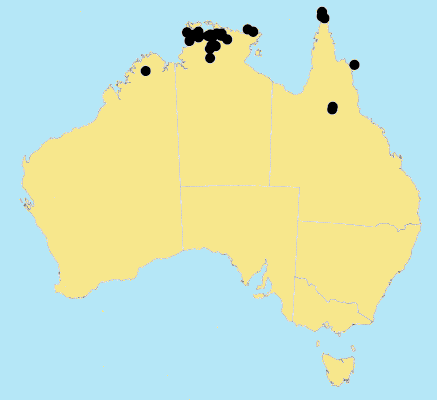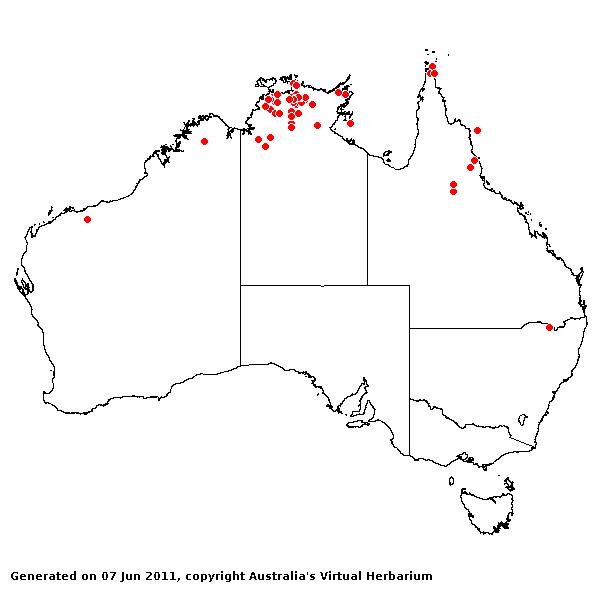Sporobolus pulchellus R. Br. Prodr. 170 (1810).
Classification. (GPWG 2001) : Subfamily Chloridoideae. Cynodonteae.
Type of Basionym or Protologue Information: LT: Brown 6206, 1803, Australia: North Coast, Arnhem Bay [Bay 3] (BM (specimen with '3, Lysispora pulchella B minor, North Coast' in handwriting of R. Br.); ILT: BRI, NEW (photo, BARI), MEL). LT designated by Baaijens & Veldkamp, Blumea 35: 452 (1991).
Key references (books and floras): [1810]. R.Brown, Prodromus (170), [2002] D.Sharp & B.K.Simon, AusGrass, Grasses of Australia.
Illustrations: [2005] K.Mallet (ed.), Flora of Australia 44B: Poaceae 3 (Fig. 57N-S).
Habit. Annual or ephemeral. Culms erect, 4–40 cm tall. Lateral branches simple or branched. Leaf-sheaths glabrous on surface. Ligule a fringe of hairs, 0.1 mm long. Leaf-blades linear, conduplicate or involute, 1–10 cm long, 0.5–2.5 mm wide. Leaf-blade surface glabrous.
Inflorescence. Inflorescence compound, a panicle. Panicle ovate, loose or effuse, 1–12 cm long, with spikelets clustered towards branch tips.
Spikelets. Spikelets pedicelled. Fertile spikelets 1-flowered, comprising 1 fertile floret(s), without rachilla extension, lanceolate, terete, 0.7–1.5 mm long.
Glumes. Lower glume lanceolate or elliptic, membranous, without keels, 0 -nerved. Upper glume lanceolate or elliptic, 1.2–1.5 mm long, membranous, without keels, 1 -nerved.
Florets. Fertile lemma 0.7–1.5 mm long, without keel, 1 -nerved. Palea 2 -nerved. Anthers 3. Grain 0.6–0.8 mm long.
Continental Distribution: Tropical Asia and Australasia.
Australian Distribution: Northern Territory, Queensland.
Northern Territory: Darwin & Gulf. Queensland: Cook.
Notes. Similar to S. lenticularis from which it differs by having smaller spikelets and by the grain usually being quadrangular as opposed to lenticular.
Endemic; mainly in northern N.T., a few collections from elswhere. Grows in open forest (Eucalyptus woodland), roadsides, on deep sands, sandstone, sandy ironstone and rocky hillsides; flowers Feb.-Nov.





